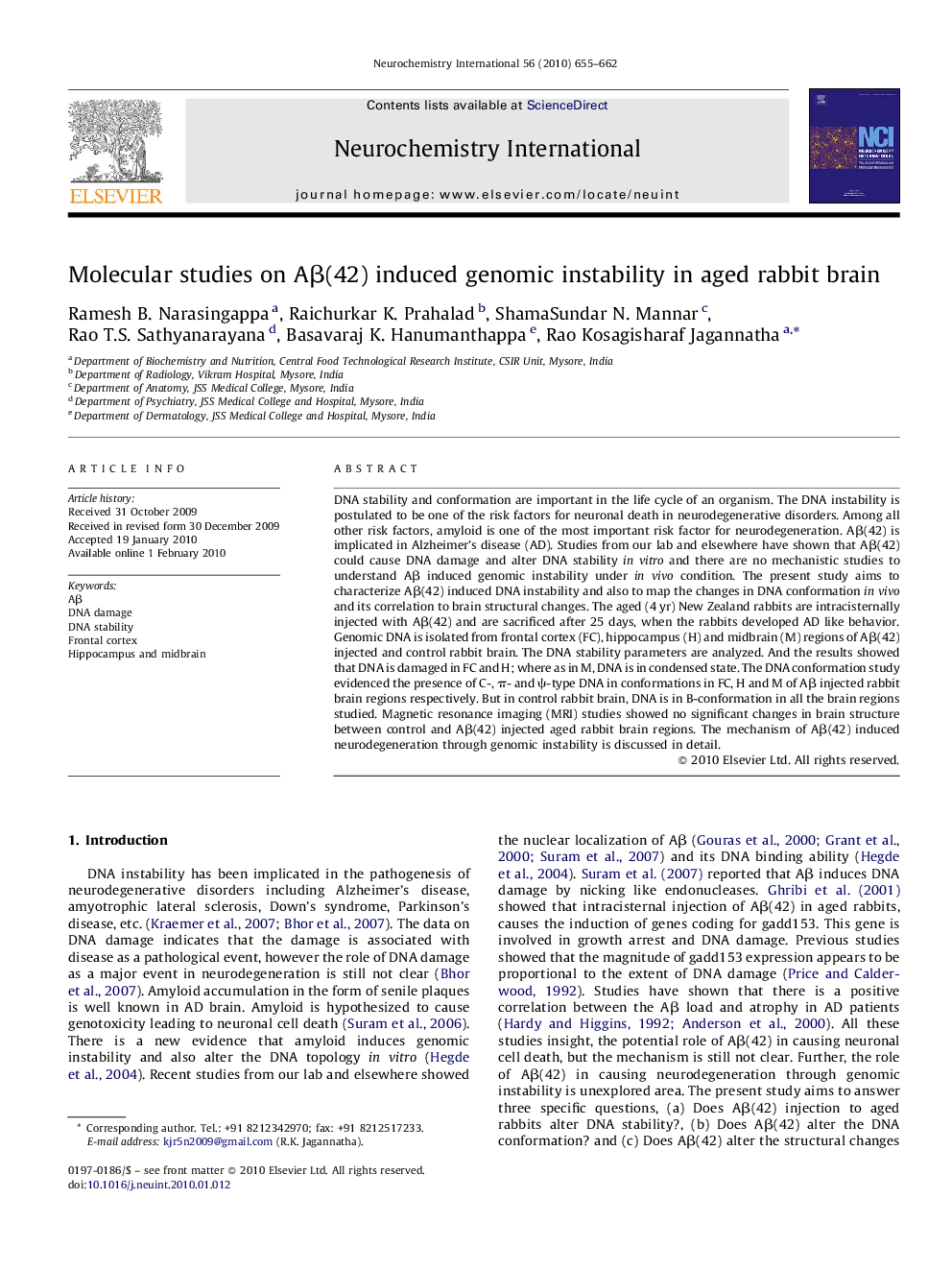| کد مقاله | کد نشریه | سال انتشار | مقاله انگلیسی | نسخه تمام متن |
|---|---|---|---|---|
| 2201542 | 1100025 | 2010 | 8 صفحه PDF | دانلود رایگان |

DNA stability and conformation are important in the life cycle of an organism. The DNA instability is postulated to be one of the risk factors for neuronal death in neurodegenerative disorders. Among all other risk factors, amyloid is one of the most important risk factor for neurodegeneration. Aβ(42) is implicated in Alzheimer's disease (AD). Studies from our lab and elsewhere have shown that Aβ(42) could cause DNA damage and alter DNA stability in vitro and there are no mechanistic studies to understand Aβ induced genomic instability under in vivo condition. The present study aims to characterize Aβ(42) induced DNA instability and also to map the changes in DNA conformation in vivo and its correlation to brain structural changes. The aged (4 yr) New Zealand rabbits are intracisternally injected with Aβ(42) and are sacrificed after 25 days, when the rabbits developed AD like behavior. Genomic DNA is isolated from frontal cortex (FC), hippocampus (H) and midbrain (M) regions of Aβ(42) injected and control rabbit brain. The DNA stability parameters are analyzed. And the results showed that DNA is damaged in FC and H; where as in M, DNA is in condensed state. The DNA conformation study evidenced the presence of C-, π- and ψ-type DNA in conformations in FC, H and M of Aβ injected rabbit brain regions respectively. But in control rabbit brain, DNA is in B-conformation in all the brain regions studied. Magnetic resonance imaging (MRI) studies showed no significant changes in brain structure between control and Aβ(42) injected aged rabbit brain regions. The mechanism of Aβ(42) induced neurodegeneration through genomic instability is discussed in detail.
Journal: Neurochemistry International - Volume 56, Issue 5, April 2010, Pages 655–662